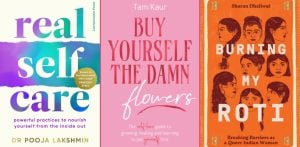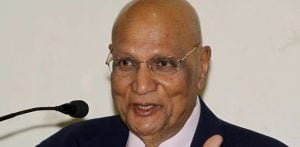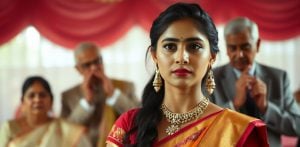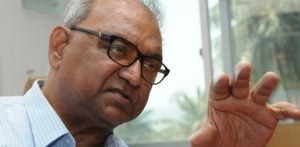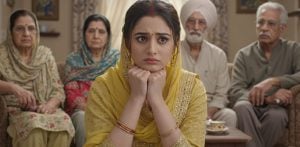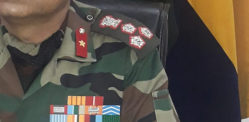"I want to say that women are recruited in the Indian army for the entertainment of men."
Female officers have served in the Indian army since 1992, yet gender equality remains a major concern.
Women make up only 3% of India’s army, a small proportion of the world’s second-largest army.
At first glance, the inclusion of women in the army appears to be a step in the right direction. However, elements of patriarchy remain deeply embedded in Indian society and have not been completely abandoned.
In fact, patriarchal notions are presumably more ingrained in the army than in other parts of Indian society.
This is due to the army’s hypermasculine nature clashing with the stereotypical image of Indian women.
Regardless, the number of females entering the army have increased over the years, with more recruiting advertisers appealing to girls.
This growth can be credited to the deconstruction of gender stereotypes in Indian culture in general.
However, such mass deconstruction is a very slow, gradual process and cannot be perfected in just a few years.
For this reason, gender equality in the Indian army is still majorly flawed.
Due to limited resources, there is little evidence that accurately describes the experiences of women in the Indian army, but the silence speaks volumes.
Women in India’s army continue to be neglected, exploited and sexually harassed by their male counterparts like in other parts of society.
DESIblitz investigates the extent of women’s rights in the Indian army.
No Women in Combat Roles
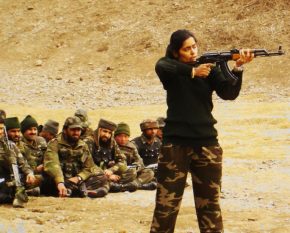
The Indian army seems to be selective in what they expect women to achieve.
When they were first accepted into the army, women joined through the ‘Special Entry Scheme’ which allowed them to serve for five years. This was later converted into Short Service Commission (SSC).
Since then, the extent of freedom has been progressing greatly but is still very poor because of women’s domestic obligations.
Today, most women in the army work as engineers, doctors, signallers and lawyers.
Akanksha Khullar, a researcher who focuses on gender equality, told the BBC female inclusion, alone, is not a feminist victory:
“(This is not a) milestone for women empowerment, as the doors have opened up with an extremely limited capacity.
“India’s national security narrative is shaped, limited, and permeated by ideas about gender – with an overt masculine predominance and the structural exclusion of women”.
Unlike the air force and the navy, the army denies women the right to combat roles where individuals actively engage with enemies.
India’s Army chief General, Bipin Rawat, caused an outcry when presenting sexist reasons for why women cannot participate in combat.
Outlook, an online magazine, quotes Rawat who said:
“We have not put women in frontline combat because what we are engaged in right now is a proxy war, like in Kashmir…
“A woman would feel uncomfortable at the front-line”.
He suggests women-specific issues such as maternity leave would cause a “ruckus” and the public is simply not ready to see female bodies in bags.
Rawat’s words are a testament to how regressive the Indian army truly is.
The legal concept of preventing women from serving in combat roles relies heavily on the male perspective of women and emphasises a lack of gender equality.
Societies’ longstanding perception of women as fragile and passive, hinders women from excelling in the army.
This is because, contrary to female characteristics, active combat requires a lot of aggression, drive and physical suffering. All of which Indian men are not ready to accept from their women.
This belief system stems from the idea that women are not physically and mentally prepared for frontline combat.
However, this reflects the country’s inability to reject gender stereotypes more than women’s competence in the army.
They forget that female doctors and nurses are already exposed to the dangers of combat, with many witnessing catastrophes firsthand.
Just because they are not engaging with the enemy does not mean that they are not risking their lives while saving others.
Some men develop this belief system because protecting women will allow them to meet their own standards of masculinity.
Many of them cannot see themselves taking commands from a female senior.
On the other hand, Indian women currently serving in the army would suggest these principles are an excuse to control women.
In an interview with Hindustan Times, a serving woman Lieutenant Colonel discusses the ridiculousness of the situation from her own experiences:
“I have gone on night patrols, managed issues like uncomfortable sleeping quarters and sanitation facilities.
“I find the objections to expanding the role of women in the forces immature.”
“As for physical fitness, it depends on your training.
“I don’t believe for a moment that women cannot fare well in combat roles, these are old shibboleths which refuse to go away.”
The issue at hand is that the army has preconceptions about women’s physical and mental abilities.
They have already decided that women will fail physical tests before allowing them to even participate.
Others fear that women’s participation will ‘bring the team down’. However, these are just excuses to keep women out of uniform.
At the very least women should have the opportunity to attempt the aerobic tests without prejudgment.
Some would argue for a country heavily criticised for its gender discrimination, little has been done to provide all genders equality.
Rather, the army provides men with the grounds to practice patriarchy.
Sexual Harassment
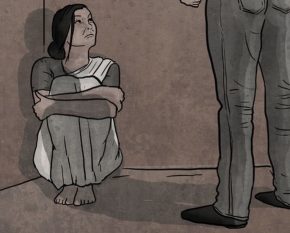
Even in the twenty-first century, sexual harassment remains a taboo subject in India.
Similarly, the Indian army attempts to hide events of sexual harassment from the public, wanting to deal with such matters privately.
Under this system, many cases of sexual harassment are likely to go unresolved.
Defence Minister AK Antony claims such incidents are very rare happenings, claiming they are “aberrations and not the rule”.
In 2009, Antony insisted that only 11 reports of sexual harassment had been made over a time period of five years.
Contrastingly, US statistics state 2,684 reports of sexual assault were made by service members in the Army in 2019, alone.
Thus, it does not take a genius to realise Antony’s statistics are highly unrealistic.
If anything, his idealistic figures, suggests an alarming amount of unreported cases of sexual harassment.
However, despite his efforts to downplay assault, rumours of such behaviour occurring in secrecy have surfaced.
A 26-year-old Army Officer, who marched down the Rajpath for ‘woman power’, accused her commanding officer of sexual harassment.
The harassment began with insensitive questions such as ‘do you have a boyfriend?’, but slowly progressed to more intrusive interactions.
The senior officer would later begin to talk about how male officers are looking at the “breasts” and “butts” of lady officers as they salute and walk. The victim recalls similar conversations:
“He called me in his office and told (me) my panty is visible on every dress whether uniform, formals or PT dress.
“He kept asking me to change the pattern of panty I wear.”
“I got embarrassed.”
She also accused the man of touching her private parts on some occasions.
After enduring this abuse over the course of six months, the victim decided to report her case.
However, it was poorly dealt with by seniors.
Under Indian law, officials are obliged to set up a committee within 48 hours of a complaint being filed. Yet, no action was taken until 2 months later.
Her father sent a letter to the authorities complaining about how they handled his daughter’s case:
“I am absolutely disappointed today and the reason is that my daughter was sexually harassed by her Commanding Officer and she complained to the higher-ups.
“In the name of taking action, the higher officials gave him (the erring colonel) a plum posting.
“Now my little child is trying her best to not let her head drop or shoulders droop.”
Similarly, in an exclusive interview, Deputy Commandant Karunajeet Kaur describes how she was sexually assaulted by a constable who snuck into her room at midnight in Uttarakhand:
“He came into my room from the second door, and said to me, ‘Madam, I haven’t touched a woman since two years, and I am badly in need of a lady’.”
Taking from her experience, Kaur believes women serving in the Indian army are there to offer sexual pleasure to male soldiers:
“In short, I want to say that women are recruited in the Indian army for the entertainment of men.
“I appeal to the Indian government to protect their mothers and sisters, and set up an inquiry into the matter to protect female officials and soldiers of the Indian Army.”
Despite her high ranking position, Kaur’s offender was not punished for his behaviour. Instead, Kaur decided to resign.
One may think resigning is an unjust end to her story, and while this is true, there have been worse endings.
For example, Squadron Leader Anjali Gupta charged her Vice Marshal Anil Chopra with sexual abuse.
While Chopra was promoted to become Air Marshal, Gupta was fired on account of ‘indiscipline’ and later committed suicide.
These occurrences prove that Senior officials in the Indian army are unfit to handle incidents of sexual violence.
It further highlights the lack of gender equality across India’s armed forces.
However, India’s laws, or more specifically, the lack of, are to blame.
There is little to no standardised laws that protect women in the army from sexual violence. The few who are given a trial are unlikely to have a fair one.
Here, it is important to note that men have also been victims of sexual assault and the law has equally betrayed them.
Gunner BD Khente shot his Commander, Randhir Singh after Singh punished him for refusing sodomy. At the trial, his colleagues defended him.
In this case, however, Khente was sentenced to life in prison.
Furthermore, the power dynamic between male superiors and rookie female officers is very ambiguous. This makes it difficult to know where women’s rights stand in the face of high ranking officials.
Senior officers may use their power to silence, humiliate and threaten their victims if they ever accused them of committing a crime.
In fact, accusing a male soldier of sexual assault is considered ‘anti-national’ in some areas of India.
For this reason, many women hesitate to come forward to report what they experienced.
Thus, the Indian army is an unsafe place to exercise gender equality.
Life After Service
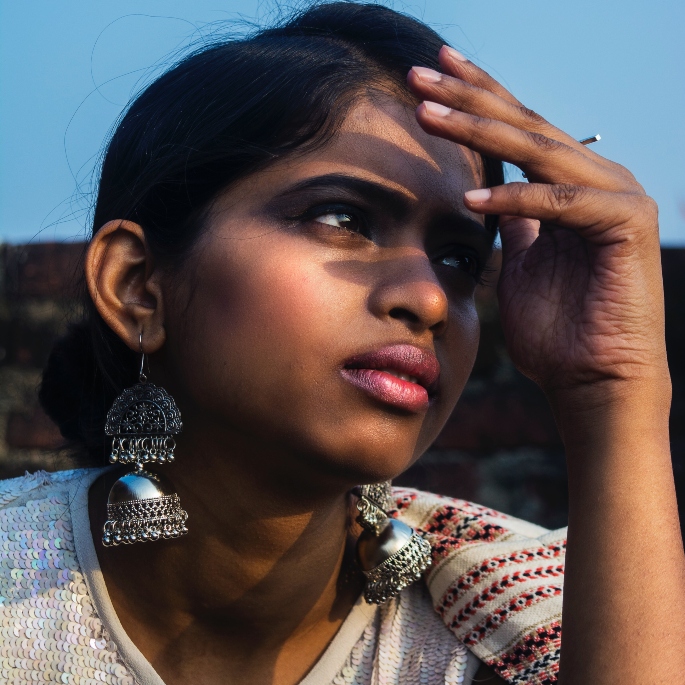
Re-entering the normal world is a difficult adjustment for many leaving soldiers. However, in India, returning is typically more difficult for women than men.
Up until recently, women were forbidden to serve longer than 14 years.
In February 2020, the Supreme Court ruled that women can serve in the military indefinitely and receive the same occupational benefits as male soldiers.
However, the fight for such gender equality has been long and gruelling.
The first file of complaint was made in 2003, asking women to be granted a permanent commission (PC). When nothing was changed complaints arose in 2006, and later in 2010.
By this point, the Supreme Court accepted the ruling but the Indian government refused to implement it.
The debate lasted 10 years, and eventually, the Court declared the situation biased and granted women permanent commission.
Before this ruling, however, hundreds of women were made to leave the army, many not knowing how to return to society.
Having spent up to 14 years in the army, women were trained as soldiers and held to the same standard of commitment as their male counterparts.
They dedicate these years to mastering their role in the army only to be discharged without any real-life experience.
Unlike women, male officers are given the freedom to take advanced technical courses that will help them in the job market.
As a result, finding work after discharge was challenging for women.
Beyond this, women were also denied pensions after leaving the army.
Only those who had served for at least 20 years were eligible for one, implying that pensions were exclusive to male soldiers.
Nidhi Rao spent 13 years of her life in the army. In an interview with the Guardian, she expresses her concern about finding work through the pandemic:
“I am jobless in the middle of a pandemic, with no financial security…”
“Most of us are past our mid-30s and are married and have children.
“Some are expecting a baby; some could not plan it due to the job uncertainty.
“After serving the institution for more than a decade, they are asking us to go and restart our careers, at this age, in the Covid-hit market.
“Who will hire us? Where do we go?”
The fact that Rao’s experiences took place after the ruling suggests PC and pensions was not being given to everyone.
Data reveals that of the 70% of women who were eligible for PC, only 45% were commissioned.
This number contrasts sharply with the 90% of Short Service Commission male officers receiving PC in 2020.
It is also in stark opposition to the army’s claim that 422 out of 615 applicants have been granted PC.
A petition filed by lawyers Archana Pathak Dave and Chitrangda Rastravar suggests that these figures are lies.
Through investigation they found that less than half of the applicants were granted PC:
“The actual number of officers who are granted PC out of 615 women officers is 277.”
This may be due to the unfair criteria women must pass before receiving PC.
The criteria include the SHAPE-1 category demand, passing the Battle Physical Efficiency Test (BPET), and undertaking an AE (Adequately Exercised) tenure for a minimum of two years.
The physicality of each criterion makes it highly unlikely for women to pass.
This is because many women who left India’s army prior to the ruling are now in their 40s and do not have the same fitness as they did previously.
To this day, some 68 women remain without a pension due to the lack of gender equality in the armed forces.
Anjali Sinha touches on the mental strain of being denied permanent commission after years of allegiance:
“When I was pregnant, they asked me to run 5km and I did…
“When I gave birth, I rejoined within a week for fear of being relegated.
“I was deemed fit till a few months ago. But now when I am demanding PC, I have been declared unfit.
“More than anything, it has hit my dignity.
“I am questioning my worth every single day.”
Despite some of the majorly regressive aspects of the Indian Army, change is in progress and many men and women find themselves enjoying army life.
Women in the army have come a long way since 1992, and they have many more rights than they did in the past.
The fact that women are speaking up about the prejudice they experience, alone, is a step in the right direction.
The future, too, looks promising with debates about women’s roles in the army coming to light.
A few years back, it would have been completely alien to see a female commander receiving respect, but it is very common today.
Seeing how things are running, eventually, there will come a day when gender equality is rampant in the armed forces.





